by Kirt Hickman
In some ways, the telling of emotions is easier to identify than other forms of tell. Simply look for the name of any emotion:
He felt defensive.
Chase was relieved.
It concerned him.
Consider the following passage from an early draft of my own science fiction novel, Worlds Asunder:
Dana spent most of the day after Bill’s surgery sitting at his bedside, battling a tumult of unfamiliar emotions. Frustration at her helplessness, fear that she’d lose her best friend, anger at those who had done this to him, regret for never having expressed her feelings in any meaningful way, and sadness for the loss of her fallen companions.
This tells what Dana is feeling. The revised passage below shows the same emotions.
Dana spent most of the day after Bill’s surgery sitting at his bedside. The doctors and nurses came and went, but she didn’t talk to them, afraid her voice would fail her if she did. Instead, she watched their faces and tried to read Bill’s progress in their expressions [ fear of losing her best friend].
She’d lost her friends and her innocence, taken by an enemy upon whom she’d fired the first shot [sadness and regret]. So she buried her head in her hands to block out everything from her sight but the man she was helpless to aid [helplessness].
Anger and frustration are missing from the second passage. I decided they would have faded to the background, supplanted by deeper, more profound feelings. Besides, the original passage contained too many emotions to begin with.
If you’re having difficulty determining whether you’ve told or shown an emotion, find a way to render it without using the name of the emotion or a synonym. You can’t tell an emotion without using its name or a synonym. Though the telling of emotions may be easy to spot, for many writers it’s one of the most difficult problems to correct. Here are some techniques that will help you show your characters’ emotions effectively:1
1. Use emotional honesty
Emotions are complex, and each is part of an emotional spectrum. The passage above that shows Dana sitting at Bill’s bedside, is a good example of the complexity of human emotions. Don’t restrict your characters to one emotion at a time or to emotional extremes.
2. Convey the source of the emotion
Consider the following passage:
Several minutes went by. Dana’s chest tightened with each passing second. It was nothing, she told herself. She should have expected it. But she was sweating in her pressure suit.
Clearly, Dana is worried about something, or something bad and unexpected has happened; the reader can’t be sure which. Though I’ve shown Dana’s physical response to her emotion, the emotion itself is lost. Now read the unabridged passage:
Several minutes went by. Still no word came. Dana’s chest tightened with each passing second. It was nothing, she told herself. Bill was always late. She should have expected it. But she was sweating in her pressure suit.
More minutes passed. Come on, Bill. The mission was timed to bring down the first four targets in the first two minutes of the attack. Yet no report came from the Puma.
The reader now knows what Dana is worried about and why. Show the cause, and the emotion becomes real.
3. Avoid clichés
Mad as hell
Green with envy
Love so much it hurts
Hate with a passion
Overused phrases like these may tell the reader what your character feels, but they don’t allow him to experience what your character is going through. Simply put, they don’t show. Find more original ways to express your characters’ emotions.
4. Use metaphor
In the following passage, Dana has spent the past several hours in the trauma center waiting for news on Bill’s condition.
Finally, Bill’s doctor emerged from the surgical wing wearing a white smock that looked like it had never been worn before. He was an angel or an apparition, his face devoid of any emotion that might reveal the state of his patient. Dana might have imagined him. Nonetheless, she rushed forward.
Comparing the doctor to an angel or an apparition, two disparate beings, shows the complexity of Dana’s emotions. Her action in the final sentence shows that her hope is stronger than her fear.
Read the rest of Kirt Hickman’s series:
“13 Ways to Show Character Emotions,” Part 2
“13 Ways to Show Character Emotions,” Part 3
1Ann Hood, Creating Character Emotions, Story Press Books, 1998.
 Kirt Hickman is a technical writer turned fiction author. His books include three sci-fi thriller novels Worlds Asunder (2008), Venus Rain (2010) and Mercury Sun (2014), the high fantasy novel Fabler’s Legend (2011), and the writers’ how-to Revising Fiction: Making Sense of the Madness (2009).
Kirt Hickman is a technical writer turned fiction author. His books include three sci-fi thriller novels Worlds Asunder (2008), Venus Rain (2010) and Mercury Sun (2014), the high fantasy novel Fabler’s Legend (2011), and the writers’ how-to Revising Fiction: Making Sense of the Madness (2009).
This article was originally published in the September 2008 issue of SouthWest Sage, and is reprinted here by permission of the author.

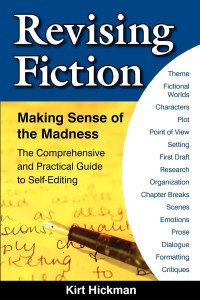

 A.R. Aeby received a Bachelor of Arts in history almost solely from the love of stories, even nonfiction ones. She is the author of the book review blog
A.R. Aeby received a Bachelor of Arts in history almost solely from the love of stories, even nonfiction ones. She is the author of the book review blog 

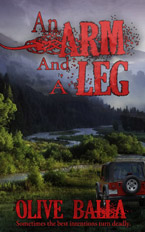
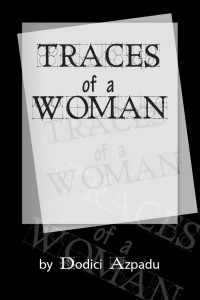
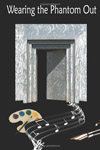

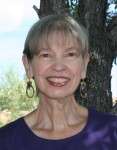 Joycelyn Campbell is a writer, teacher, and self-styled metacognition specialist (for lack of a better word). Through Farther to Go! she helps people discover what they really want in life and how to use their brain—and narrative structure—to get more of what they want and less of what they don’t want. She also facilitates Monthly Meetings of the Mind (& Brain) at North Domingo Baca Multigenerational Center in Albuquerque. Find out more at
Joycelyn Campbell is a writer, teacher, and self-styled metacognition specialist (for lack of a better word). Through Farther to Go! she helps people discover what they really want in life and how to use their brain—and narrative structure—to get more of what they want and less of what they don’t want. She also facilitates Monthly Meetings of the Mind (& Brain) at North Domingo Baca Multigenerational Center in Albuquerque. Find out more at 
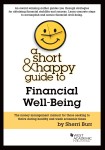
 Joanne Matzenbacher does email marketing for independent bookstore
Joanne Matzenbacher does email marketing for independent bookstore 























